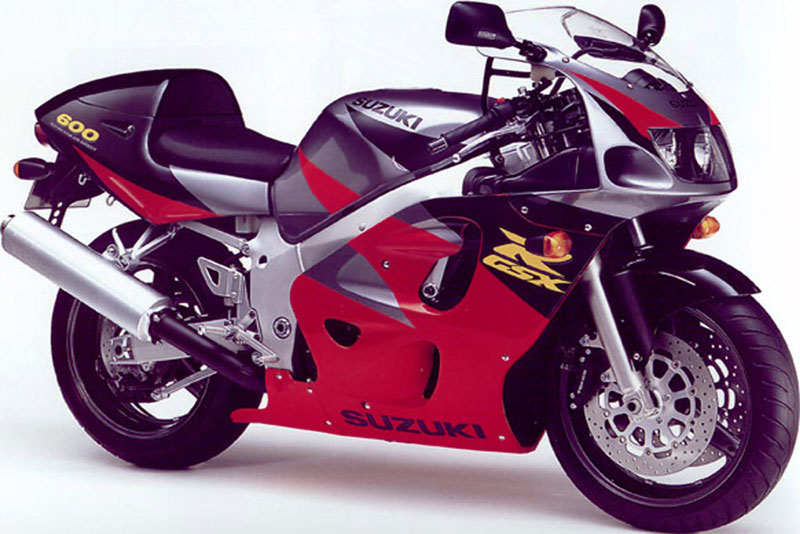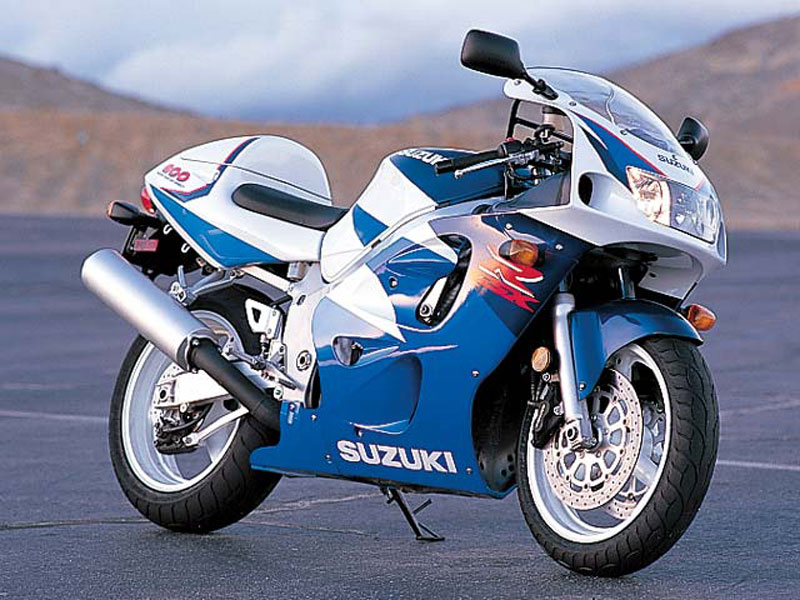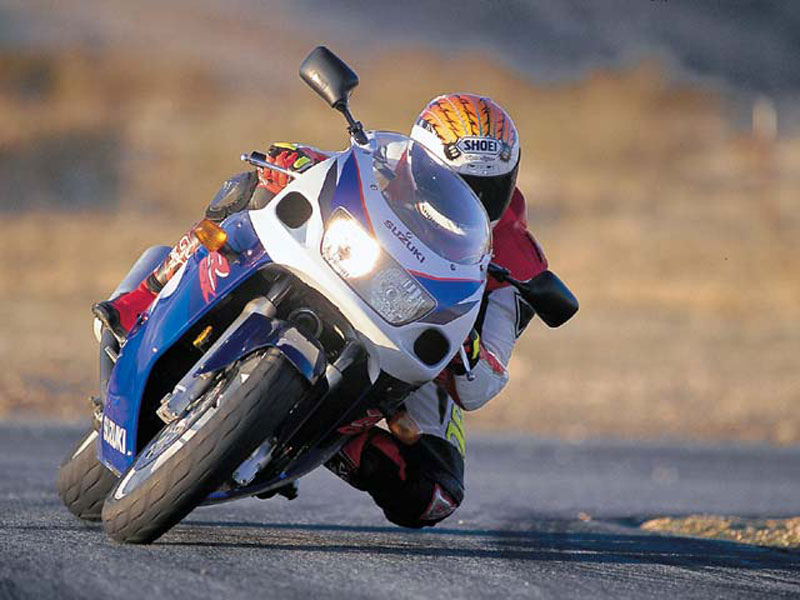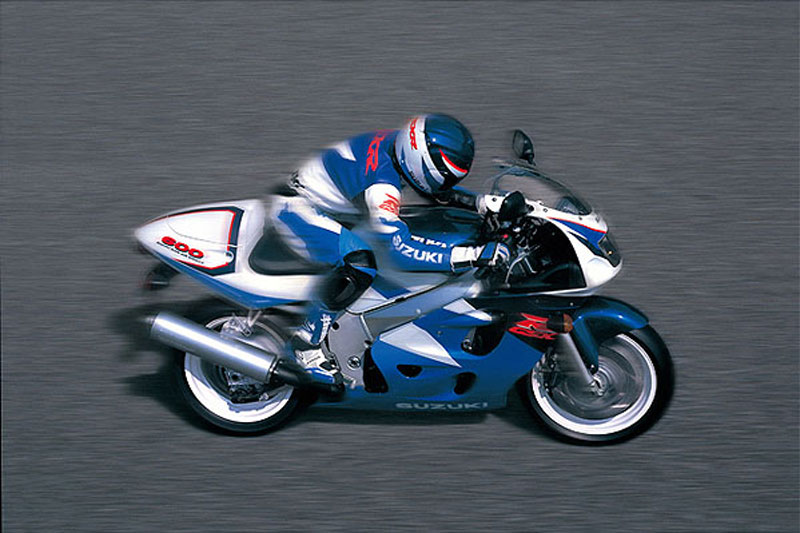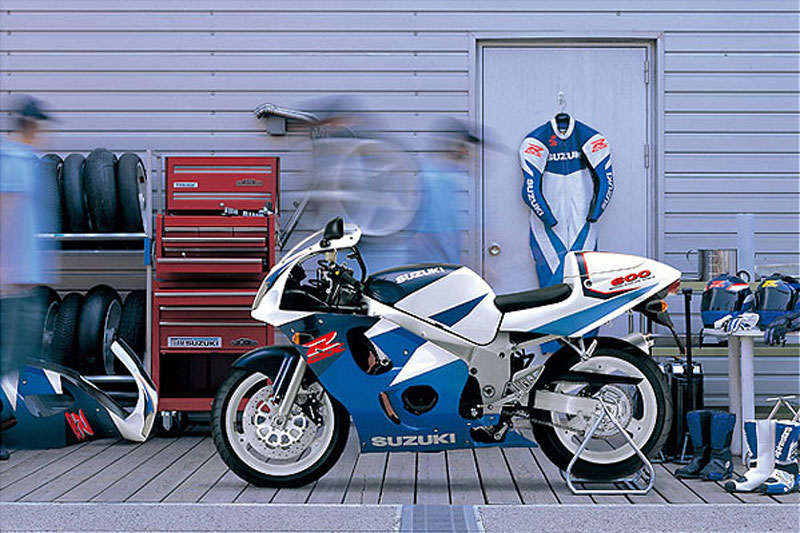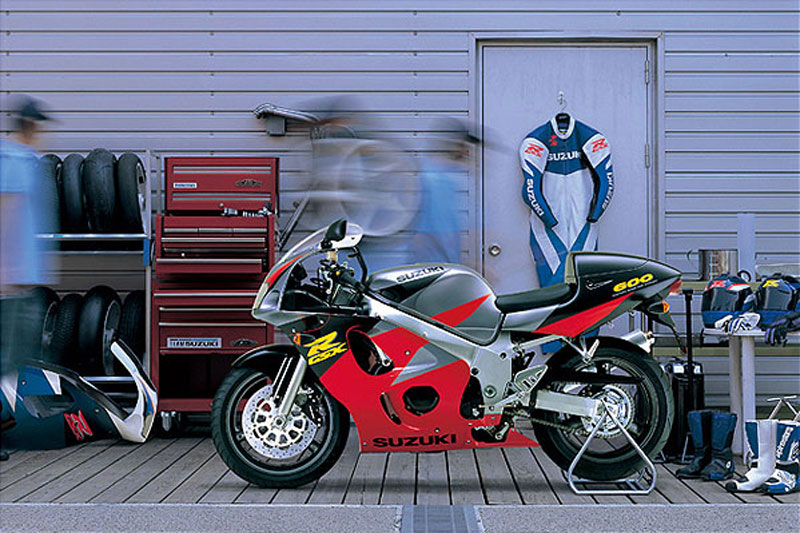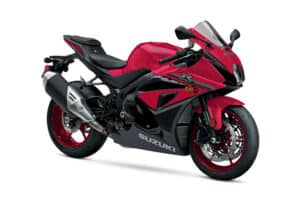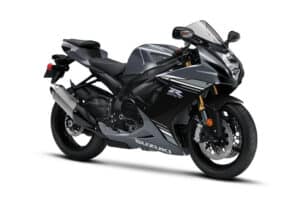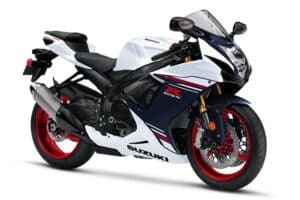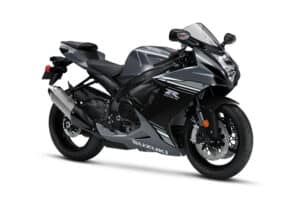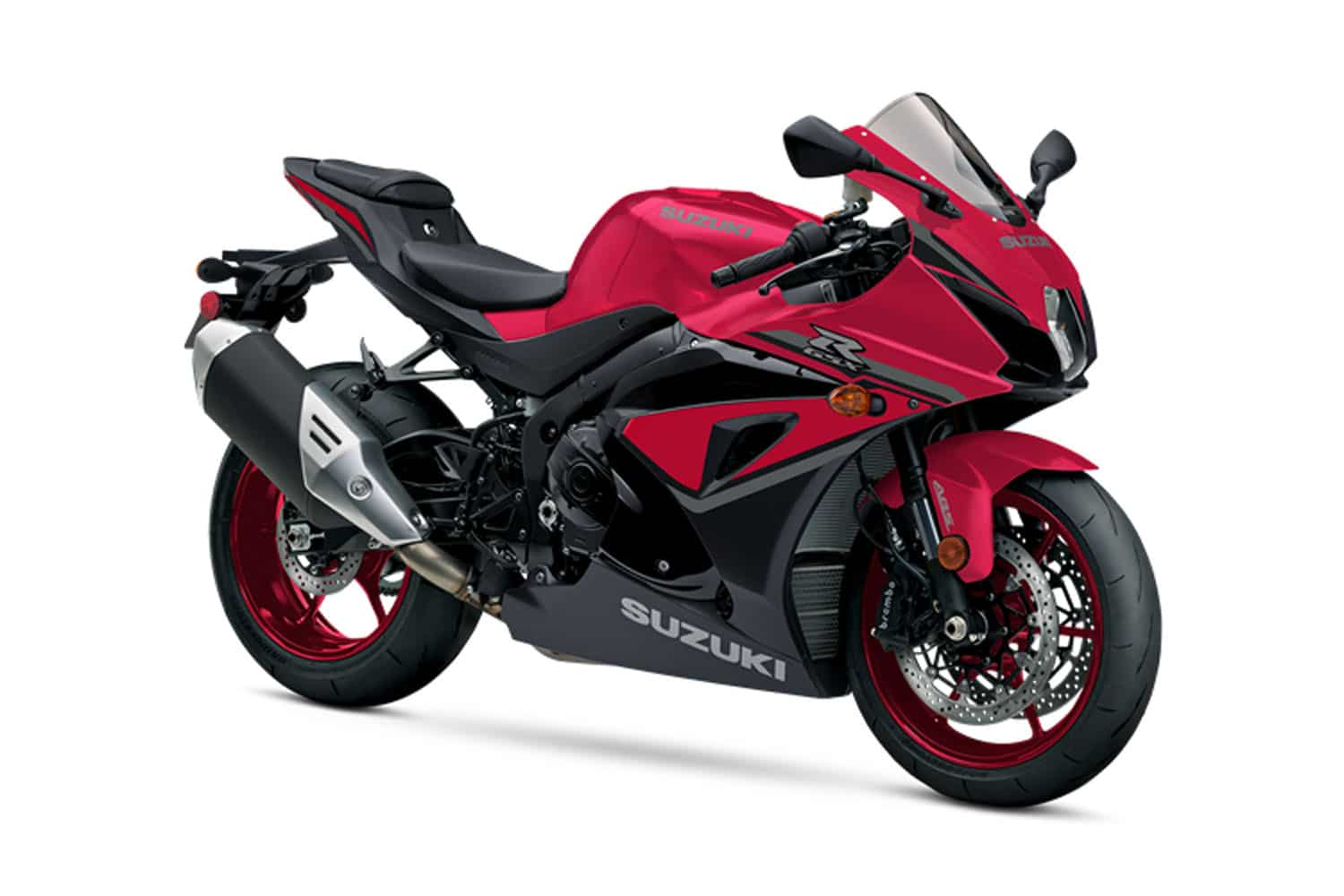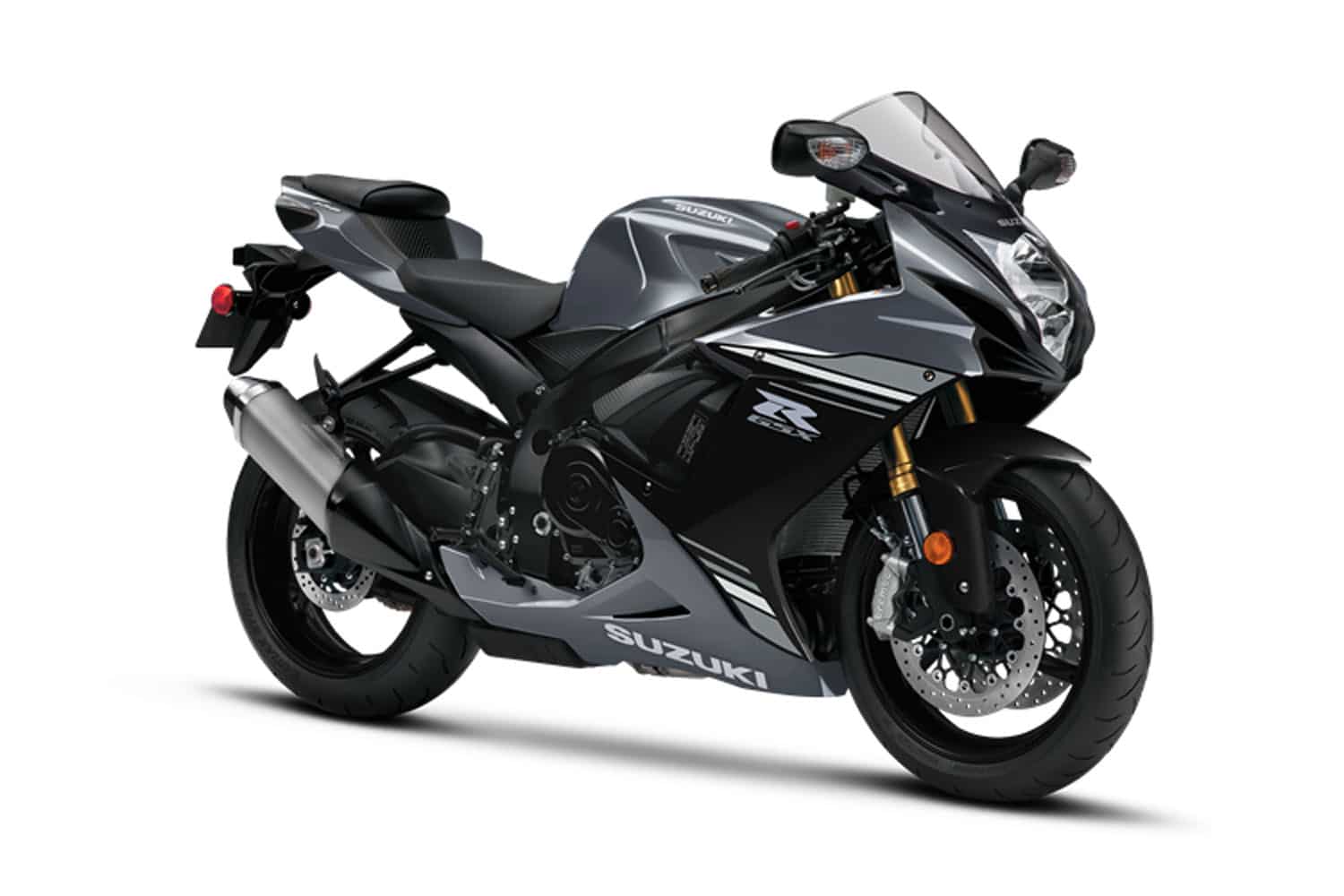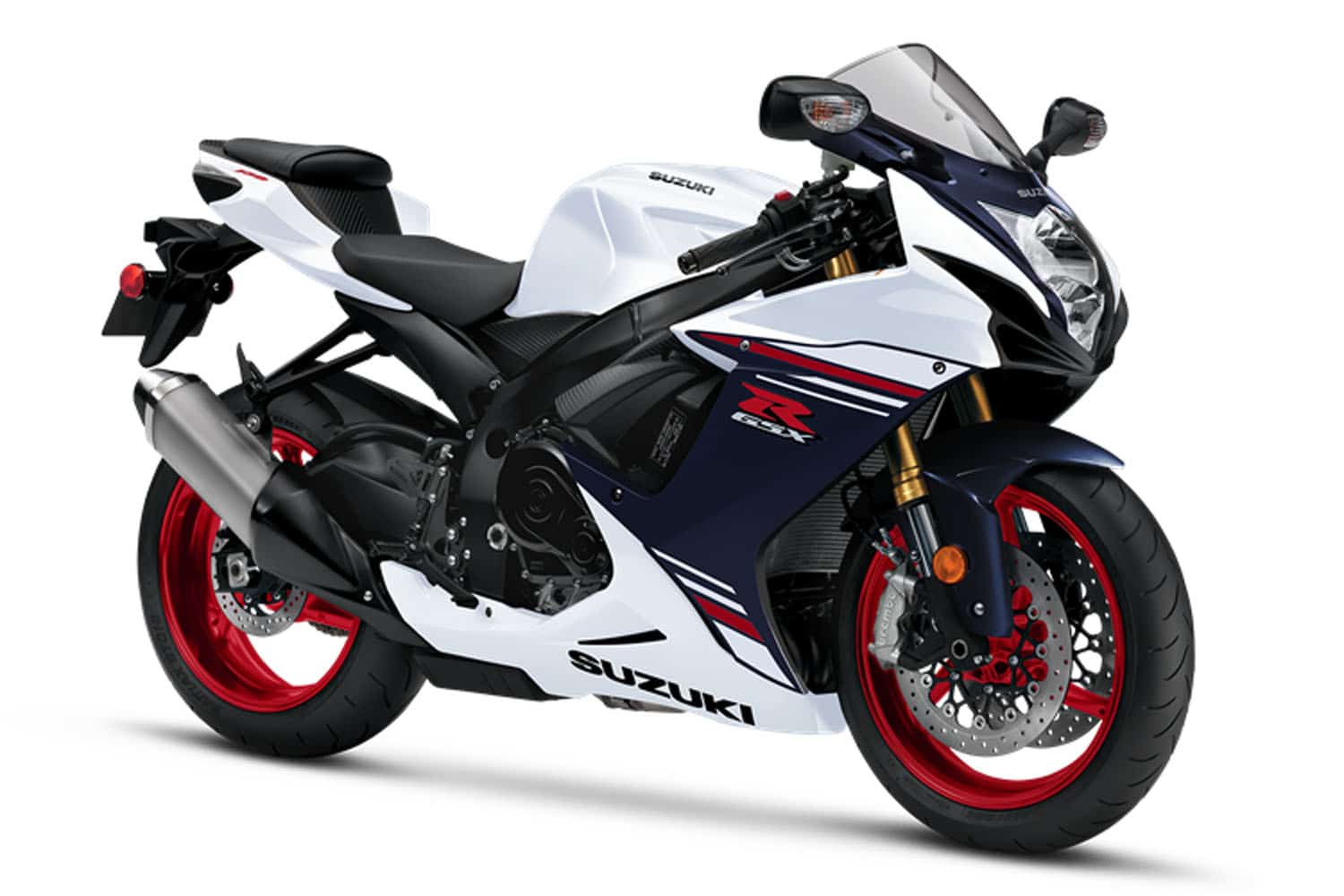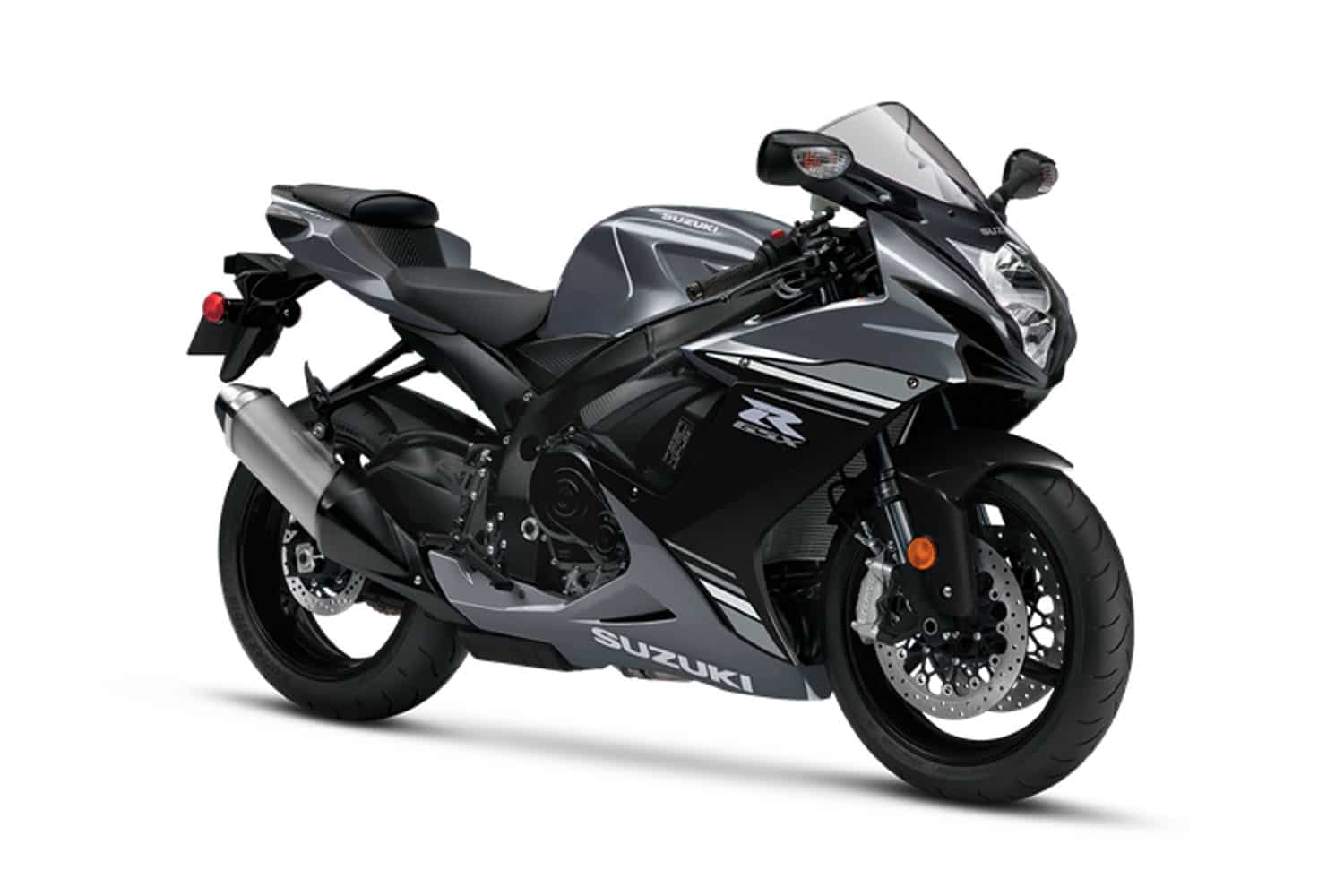Suzuki GSX-R600 1997, redesigned with the introduction of the DASS (Suzuki Ram Air Direct) and extended the model until 2000. Suzuki Motor Corporation took the opportunity to re-enter the class 600 on the new platform 750, this time waiting that were most successful (the Suzuki GSX-R600 was born in 1992 but in 1993 was discontinued due to its low commercial interest). It helped a lot to the new bike was much smaller and lighter than the previous Suzuki GSX-R750, and to maintain the same components such as chassis, engine and body made sense.
Introduced in 1997, the Suzuki GSX-R600 began its development while the Suzuki GSX-R750, rather than be an afterthought, it was part of the planning of this generation GSXRs. Although shared much with the Suzuki GSX-R750 The new Suzuki GSX-R600 was intended to be a little lighter (11 kilos) and cheaper to manufacture. Part of this economy comes from the shared components, but other intelligent cost cutting measures were implemented.
These measures were not specifically engine cowling It shared with Suzuki GSX-R750, Suzuki GSX-R600 but yet received 1997 changes. The compression ratio is slightly higher (12.0 vs 11.8) compared to the Suzuki GSX-R750, and valves were, as expected, slightly smaller. The bank had 36.5 mm Mikuni carburetor throat instead of 750 units of 39 mm, despite consuming air through a Airbox (bladder) like the 750 and the same size of the Ram-Air (airways).
The DASS stands for Suzuki Ram Air Direct (Direct Air Force Suzuki) is a system used by the manufacturer Suzuki in some of their motorcycle engines. It consists of a direct air intake, usually from the nose fairing, which goes directly to a box or airbox overpressure, where the feed rate for induced dynamic pressure, the air increases its pressure relative to atmospheric, being then mixed with fuel and subsequently injected into the cylinders. System efficiency increases with speed, since the pressure in the airbox increases with it, thus resulting in a supercharging system, acting the same way as a mechanical displacement compressor, but without needing to use any element added to the engine.
Suzuki Motor Corporation also released the direct ignition system (DIS direct ignition system) Suzuki GSX-R 600 in 1997, a year before the Suzuki GSX-R750, which receives the same technology. Sometimes known as coils “stick” (stick), each spark plug features a small ignition coil, reducing the length of the high voltage circuit and improved spark energy.
The chassis of the Suzuki GSX-R750 was maintained for Suzuki GSX-R600 1997, and equipped a lighter swingarm without the upper reinforcement which resulted in a shorter wheelbase of 54.7 centimeters (0.3 inches shorter than 750).
The inverted fork of the Suzuki GSX-R750 was replaced by a conventional fork Showa, and six-piston calipers in the Suzuki GSX-R750 gave way to four-piston Tokico Suzuki GSX-R600 in 1997. The radii of suspension is also reduced. At the other end, the exhaust pipe was about 20 mm shorter than the 750.
These are the specifications. The important thing for Suzuki Motor Corporation was that there was a sports competent in class 600 to defend the name GSX-R. The exams test hailed the new chassis and good power of the Suzuki GSX-R600 1997. Like the Suzuki GSX-R750, was considered much more serious, even more radical, compared with 600 weapons of the class of that era: Honda CBR 600 F3, Kawasaki ZX 6 R and Yamaha YZF 600 R.
Suzuki GSX-R600 1997 Specifications
Colors
Blue and White
Black, red and silver
Blue and Black (limited release)
Dimensions and curb weight
Overall length: 2,065 mm (81.3 in)
Overall width: 720 mm (28.3 in)
Overall height: 1,135 mm (44.7 in)
Wheelbase: 1,390 mm (54.7 in)
Ground clearance: 130 mm (5.1 in)
Seat height: 830 mm (32.7 in)
Empty weight: 174 Kg (384 lbs)
Engine
Engine Type: 4 stroke, liquid cooled, DOHC
Number of cylinders: 4 cylinders
Bore: 65.5 mm (2.579 in)
Stroke: 44.5 mm (1.752 in)
Displacement: 600 cc (36.6 cu in.)
Compression ratio: 12.0: 1
Carburetor: MIKUNI BDSR36
Air filter: Paper element
Starter system: Electric
Lubrication system: Wet Collector
Drivetrain
Clutch: Wet, multiplate oil
Transmission: 6-speed constant mesh
Gearshift pattern: 1 reduction, 5 increase
Primary reduction ratio: 1.756 (72/41)
Gear Ratio:
- First: 2,866 (43/15)
- 2nd: 2,058 (35/17)
- 3rd: 1,650 (33/20)
- 4th: 1,428 (30/21)
- 5th: 1,285 (27/21)
- High: 1,081 (26/22)
Final reduction ratio: 2.812 (45/16)
Drive chain: RK 525SMOZ2, 108 links
Chassis
Front suspension: Telescopic, coil spring, fully adjustable spring preload, damping fully adjustable rebound damping oil
Rear suspension: articulated type, coil spring, damping gas / oil, adjustable preload fully adjustable shock compression and rebound
Front fork lift: 120 mm (4.7 in)
Rear wheel travel: 133 mm (5.2 in)
Steering angle: 24º
Tilt the front axle: 30 ° (right and left)
Filmed: 96 mm (3.8 in)
Turning radius: 3.1 m (10.2 ft)
Front brake: Hydraulic drive, double disc, 4-piston caliper
Rear brake: Hydraulic drive, disc, 1 piston caliper
Front Tire Size: 120/70 ZR 17 (58 W), tubeless
Rear Tire Size: 180/55 ZR 17 (73 W), tubeless
Electrical Equipment
Ignition Type: Electronic ignition (CDI)
Ignition timing: 5th BTDC at 1500 rpm
Spark plug: NGK CR9E or NIPPONDENSO U27ESR-N
Battery: 12 V 28.8 kC (8 Ah) / 10 HR
Generator: Three-phase AC generator
Main fuse: 30A
Fuse: 15/15/10/15/10 A
Headlight: 12 V 55W + 12 V 55 W (H7)
Flashing light 12 V 21 W
Brake light / tail: 12 V 5/21 W x 2
Light: 12 V 5 W Speedometer light 12 V 1.7 W
Neutral indicator light 12 V 1.7 W
Indicator light beam 12 V 1.7 W
Indicator light turn signal 12 V 1.7 W
Indicator light fuel level: 12 V 1.7 W
Capabilities
Fuel tank, including reserve: 18 l (4.8 / 4.0 US / Imp gal) Engine oil:
- oil change: 2,600 ml (2.7 / 2.3 US / Imp qt)
- with filter change: 2.800 ml (3.0 / 2.5 US / Imp qt)
- Repair: 3.500 ml (3.7 / 3.1 US / Imp qt)
Refrigerant: 2,550 ml (2.7 / 2.2 US / Imp qt)
Suzuki GSX-R600 1997 Image Gallery

